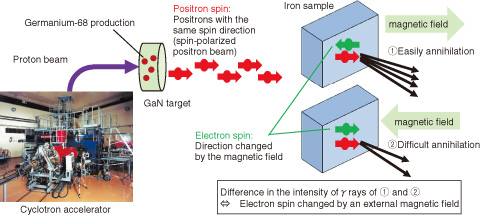
Fig.7-11 Evaluation of electron spins of iron sample using spin-polarized positron beam
Spintronics is a new technology that uses the up and down electron spins like the “0” and “1” values in a digital circuit. This technology is expected to lead to the development of new devices with features such as very low power consumption, which cannot be achieved through conventional semiconductor technology. In advanced research on magnetic substances for spintronics, the evaluation of the electron spin is important. By using positron annihilation spectroscopy (PAS), we can obtain information on the electron spin existing in the material surface or interface more easily than by the conventional technique.
A positron, which is the antiparticle of an electron, annihilates with the electron in the material, and γ rays are emitted. In the conventional PAS method, only the electron momentum is measured from the energy spectrum of the γ rays. We tried to detect the direction of the spin in addition by developing a spin-polarized positron beam, because positrons, like electrons, also have spin.
The positron beam can be formed by collecting the positrons that are emitted from a radioisotope. When the spin polarization is improved by selecting the spin direction of the positrons, the beam intensity decreases. To achieve both high spin polarization and sufficient beam intensity, we used a germanium-68 radioisotope that emits highly spin-polarized positrons. By using this radioisotope produced by proton beam irradiation of a gallium nitride target in a cyclotron accelerator, a positron beam with a high spin polarization of 47% was successfully produced (Fig.7-11). This value is almost twice that of a positron beam produced by the commonly used sodium-22 radioisotope. When a pure iron sample was irradiated with this spin-polarized positron beam, the intensity of the γ rays was increased when the spin direction was controlled, so positrons annihilated easily with electrons. This result shows that detailed information about the electron spin, which causes the magnetism of magnetic substances, can be extracted.
The PAS method using the spin-polarized positron beam is expected to be a new evaluation technique that is necessary for the future development of spintronics.
This work was supported by a Japan Society for the Promotion of Science (JSPS) KAKENHI Grant-in-Aid for Scientific Research (B) (No.24310072).
<Previous: 7-4 | Next: 8 Nuclear Science and Engineering Research >